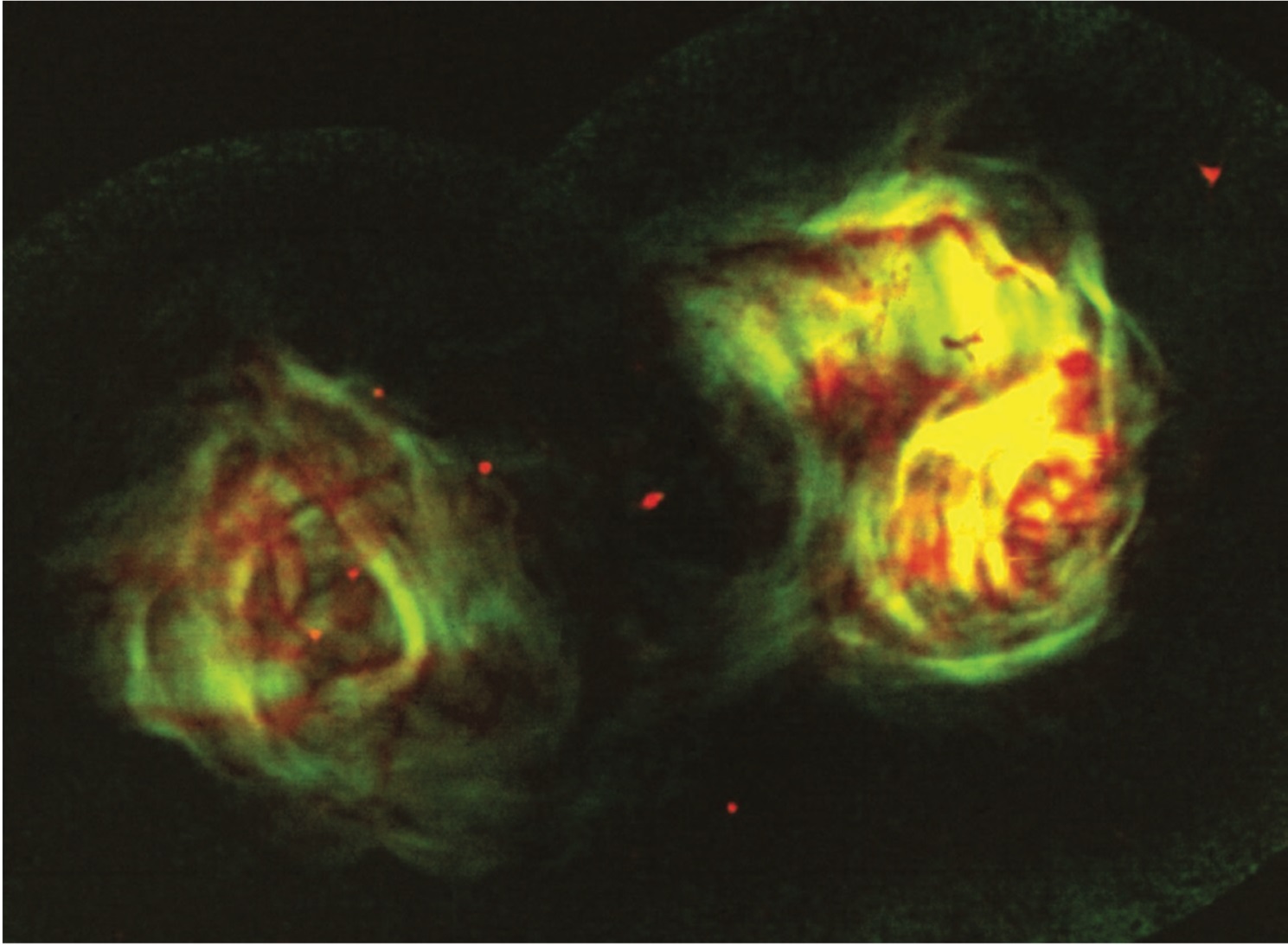Searching for magnetic fields in radio galaxy Fornax A (NGC 1316)
One of ASKAP’s survey science teams, Polarisation Sky Survey of the Universe’s Magnetism, or POSSUM, aims to determine the origin and evolution of magnetic fields throughout the Universe using observations of polarised radio waves. This new image shows that ASKAP should indeed be an excellent telescope for the job.
As the second milestone on the countdown to full survey science, the ASKAP commissioning team recently released an image of the continuum-averaged total intensity flux (the sum of everything the telescope receives) from the radio galaxy Fornax A (NGC 1316) at 944 MHz. However, ASKAP’s receivers record more than just the averaged flux – the data we gather contains information from 288 individual channels of 1 MHz width (in continuum observing mode) and also from two orthogonal polarisations. This lets astronomers investigate the radio emission received in more detail, learning more about how it originates.
The most difficult aspect of observing polarised emission with a radio telescope is calibration. Because we need to combine the signals from two feed elements, we need to know exactly how these two electronic systems differ from one another. Any differences that we do not account for would be misinterpreted as coming from the astronomical source itself. With ASKAP’s phased array feeds we have a distinct advantage when it comes to calibration – the ability to control the exact properties of the beams that receive the two orthogonal polarisations.
ASKAP uses electronically-formed “beams” to receive radio signals from a given direction. Each beam is actually a pair of beams that point in the same direction, but are sensitive to two different directions of polarisation (usually referred to as X and Y). In a recently-published memo (http://www.atnf.csiro.au/projects/askap/ACES-memos), we describe the technique by which ASKAP can align the relative phase of the X and Y beams – something not usually possible. This makes polarisation observations with ASKAP much easier to calibrate.
ASKAP commissioning team member and polarisation expert Craig Anderson took the same data used to make our Fornax A image and used similar processing methods to make an image of the linearly polarised intensity, without needing any additional calibration steps or even rotation measure synthesis. In this image, darker areas represent regions of strong linearly-polarised emission. In future, astronomers may be able to use this information to study the properties of magnetic fields in Fornax A and learn more about how the giant radio “lobes” are formed by the ejection of material from the accretion disk of the super-massive black hole at the centre of the galaxy.

This new image was made with a single ASKAP observation of 10 hours duration. It improves on the previous best image made with the VLA, being over five times more sensitive to faint emission features.
The layout of the ASKAP array means that faint, extended, wispy features, as well as smaller, rapid spatial changes in the emission structure, are all imaged with much higher fidelity. This allows us to do new science. For example, a particular region of interest is known as "the ant", which is visible in the middle of the western (right-hand) lobe as a tendril of white and grey seen against the black background. This is thought to be associated with a cloud of ionised hydrogen gas, held together by magnetic fields in the intergalactic space between the radio lobes and ourselves. The radio emission from Fornax A illuminates this object from behind, allowing us to better understand its internal properties, and how it is held together in its harsh environment.
Another region of interest is the circular grey patch seen at the middle-right of the western lobe. This is associated with a spiral galaxy sitting in the foreground of the lobes much like the ant, and it can be studied with our observations in a similar way. Finally, the eastern (left-hand) lobe shows striking parallel filaments of polarised radio emission (dark features). Nobody yet knows how these form, but they are observed in many similar objects, and must be an important piece of the puzzle for understanding how radio lobes form and evolve. ASKAP observations may finally help shed new light on this and other such mysteries.

Previous image of Fornax A in polarised intensity, made with the NRAO Very Large Array (Fomalont et al., 1995)
